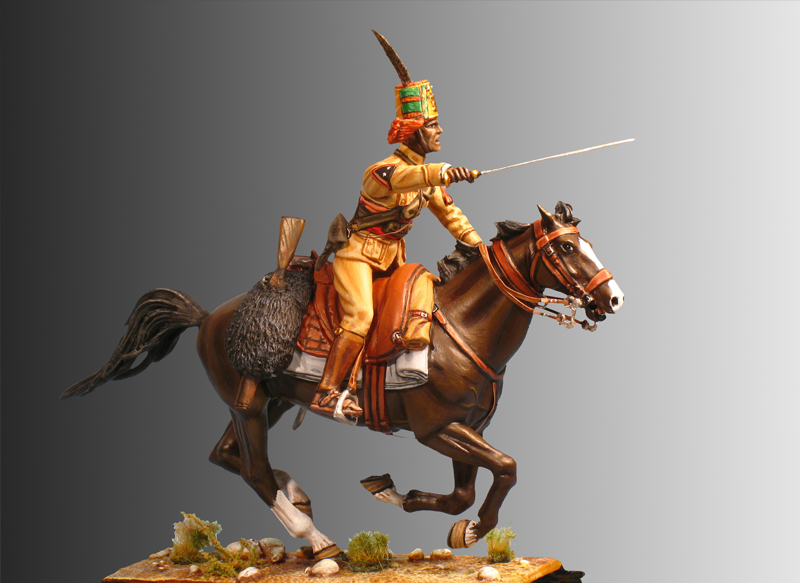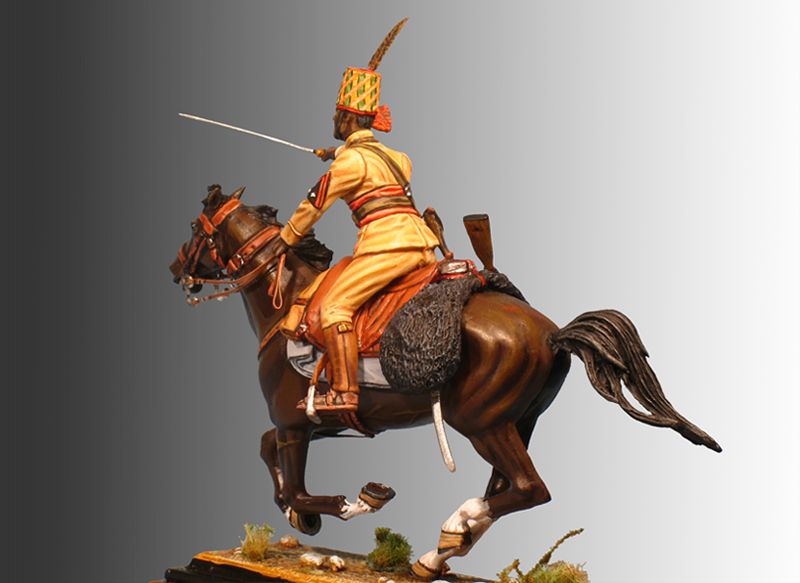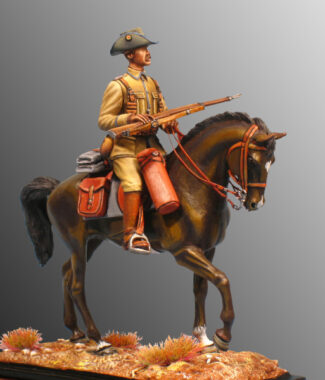The Amhara Group or Band was composed of askaris (1). The askaris also performed police and personal security duties. Belonging to the Ethiopian ethnic group Amhara (as well as elements of Eritrean and Yemeni origin) settled between July 1, 1938 and February 1940 in the colonial territories of Italian East Africa at the initiative of the Duke of Aosta. The largest group of 1700 horsemen was entrusted to the command of Lieutenant Amedeo Guillet, known as Commander Devil, who had the idea of enlisting the best men of the Negus Haile Selassie I -exiled in 1936-, who had taken up the occupation in arms.
At the outbreak of World War II, the Group was assigned to the areas of operations between Eritrea and Ethiopia and distinguished itself among the precursors of the so-called Battle of Agordat, during which it had a confrontation in Cherù with the troops of the “Gazelle Force” of the British Army -4th Indian Infantry Division-, made up largely of Sikh Indian men.
The figure represents a bulucbasci (or buluk-basci) (from the Turkish “company commander”) was a military rank of the Italian colonial troops, equivalent to the rank of sergeant of the Regular Army. The grade was between the sciumbasci -sergeant major- and the muntaz -corporal-. The two white stars indicate 14 years of service.
In terms of equipment and uniformity, the askaris wore the tall and picturesque fez (tarbuch). It was characteristic of the Eritrean Cavalry Corps; with a long feather inserted in a sheath of the colored lateral band that surrounds the fez. Khaki shirt and trousers, leather leggings, and boots or sandals. He wears the etagá, a sash eight feet long and sixteen inchs wide, used as a belt. They were differentiated by color: red for the Amhara squad and checkered for the Cheren squad. He carries the Martial revolver model 1874. These squadrons were equipped with the Mänlincher Carcano Model 91 cavalry carbine, housed in its holster and carried in one of the hair saddlebags on the horse, and whose chargers were carried in the two-compartment shoulder strap, as shown in the figure. In his right hand he wields the shotel, a curved sword from Abyssinia, whose sheath is inserted into the horse’s other saddlebag.
NOTE 1)
In the Arabic, Persian and Swahili languages, the word askari means “soldier”. In Western languages the term is used to define indigenous troops from Africa and the Middle East who served in European colonial armies during the 19th and 20th centuries.
The askaris corps proved to be the right and most useful tool for a militarily and financially weak country like Italy in the difficult campaigns abroad. Economical, reliable and with great morale when they were well led, the askaris proved to be the perfect soldiers in Africa, fighting enemies who had already defeated European armies, such as the Dervishes and the Ethiopian Empire, which proved to be a stumbling block too difficult to break for the ambitious but still disorganized Kingdom of Italy. They showed their skills from the beginning of their history and became a proud part of the Italian army until the end of East Africa in 1941.






Reviews
There are no reviews yet.